Menus
- New versus old
- Kawasaki Z 1000 SX with cornering ABS
- Responsiveness with both impeccable
- Kawasaki Z 1000 SX with a range of 365 km
- New Z 1000 SX only slightly more expensive
- MOTORCYCLE conclusion
- Data and measured values
- Used Kawasaki Z 1000 SX in price comparison

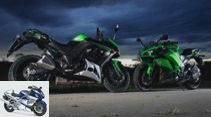
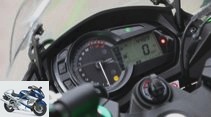
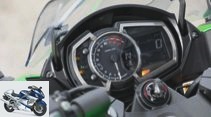
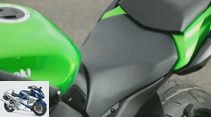
13 photos
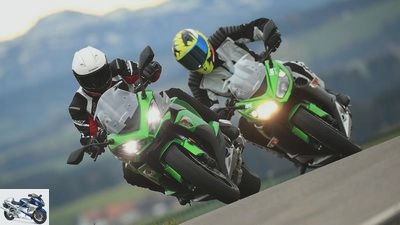
1/13
Kawasaki Z 1000 SX model year 2016 and 2017 in comparison.
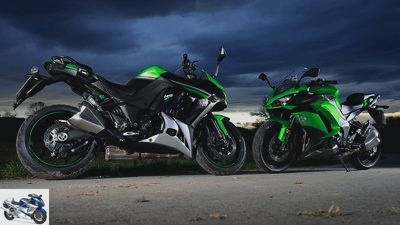
2/13
Kawasaki Z 1000 SX model year 2016 and 2017 in comparison.
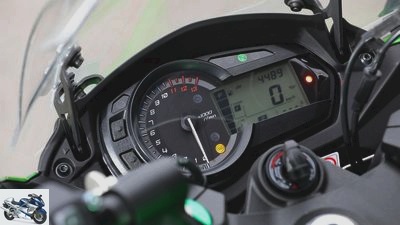
3/13
There is more to see in the new cockpit (next picture).
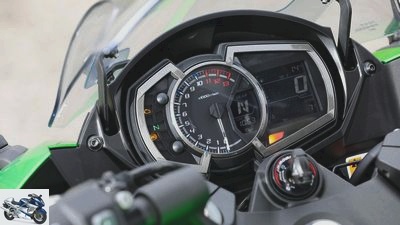
4/13
A gear indicator has been added as a new display element, supplemented by a display of the outside temperature that can be called up.
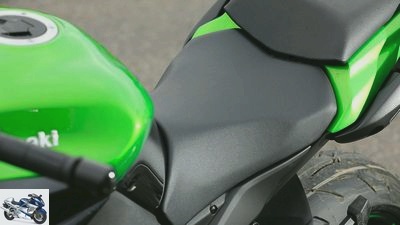
5/13
The upholstery of the new Z 1000 SX is cut wider towards the tank and offers more contact surface (next picture).
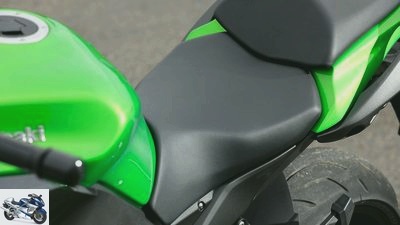
6/13
This increases seating comfort without negatively affecting handling when standing.
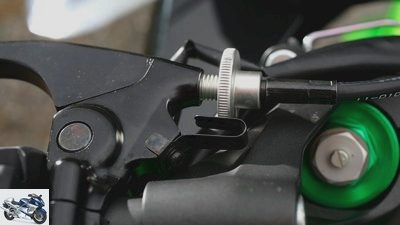
7/13
An important detail: Because the clutch cable on the 2017 Z-1000-SX is adjusted without a spring … (next picture)
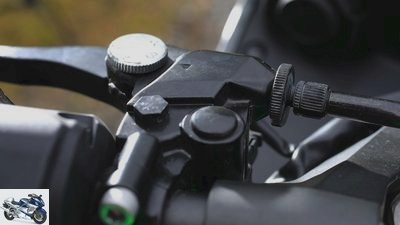
8/13
…the complete fitting can be turned further down if necessary, and the lever is now adjustable.

9/13
Clearly visible: The reversing lever on the old Z 1000 SX is different.
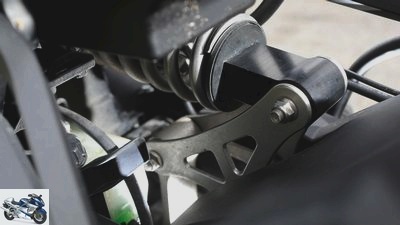
10/13
The changed geometry results in a different progression, which ensures a smoother response from the damper.
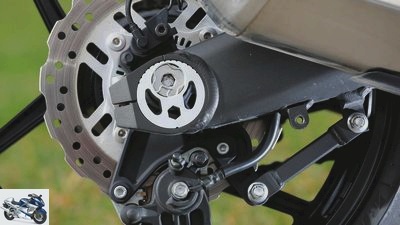
11/13
Only rarely seen: Both have an eccentric to adjust the chain tension.
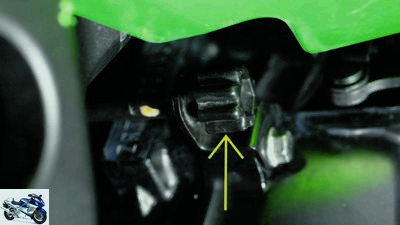
12/13
Despite the injection, the idle speed is regulated manually on the new and old Z 1000 SX.

13/13
There are plenty of new, state-of-the-art control electronics under the more aggressively designed shell.
Kawasaki Z 1000 SX 2017 in the test
New versus old
Optical fine-tuning and detail adjustments that promote driving comfort – the new Kawasaki Z 1000 SX reveals these changes immediately when compared with its predecessor. The most important model maintenance measures, however, are hidden in the extended electronics package.
The idea was a good one: in 2010, Kawasaki presented the naked Z 1000 for the first time, the disguised Kawasaki Z 1000 SX aside. That should appeal to friends of potent four-cylinder engines who have firmly anchored the word tours in the requirement profile. With a generously dimensioned plastic insert including a three-way adjustable windshield, different handlebars, more comfortable seat, larger tank and new cockpit, the naked bike became a sports tourer. It received the latest update for the 2017 season and is already the third generation to leave the Akashi factory. Does the new edition only follow the premise of a delicate retouch, or does the 2017 model year clearly stand out from its predecessor? The direct comparison should clarify it.
Buy complete article

Kawasaki Z 1000 SX 2017 in the test
New versus old
2017 model with a more sensitive TC
Even if there were some changes in the design, the most important innovations of the current Kawasaki Z 1000 SX remain hidden from the eye. This is about bits and bytes, the recording of driving conditions in order to regulate assistance systems as effectively as possible. The old Z 1000 SX already had it. With her, an ABS ensured the safest possible deceleration, an adjustable traction and wheelie control monitored the appropriate propulsion when accelerating. But nothing is as old as yesterday’s technology, which is why Kawasaki has upgraded these systems, which the manufacturer itself summarizes under the acronym KCMF (Kawasaki Cornering Management Function). The heart of the electronics upgrade is the now installed IMU (Inertial Measurement Unit) from Bosch. This records the acceleration values of the new Z 1000 SX along the longitudinal, transverse and vertical axes, and also takes into account the roll and yaw rate, i.e. the rotation of the motorcycle around its own axis. Supplemented by the data of the pitch angle, the IMU forwards signals to the ABS and the TC.
In a direct exchange of blows with the 2014 Z-1000-SX, this means one thing above all: a more sensitive control behavior. This can be seen in the traction control. With the old Kawasaki Z 1000 SX, the intervention of the TC is like a harsh staccato. The only data input for the 2014 model is the comparison of the wheel speeds. With the currently installed IMU, however, significantly more information is available. This results in a more sensitive intervention by the traction control. The yellow indicator light in the cockpit alone signals that the system has been implemented, and the control processes themselves are barely noticeable.
Kawasaki Z 1000 SX with cornering ABS
The IMU also uses the new Kawasaki Z 1000 SX when braking. Although Kawasaki does not use the word cornering ABS, the IMU also feeds the ABS control unit with data. As a result, this now allows the most effective and safe deceleration possible in an inclined position, but also helps when stopping straight ahead. Fine control intervals and lift detection keep the rear wheel on the ground. It can only get restless when it is fully loaded. The old Z 1000 SX is a little more nervous here. The slight agitation around the rear section when fully anchored for two is largely due to the new chassis setup of the Z 1000 SX. To increase comfort, Kawasaki re-tuned the shim packages at the front and rear – with the spring rates remaining the same. In addition, the rear damper received a new deflection. So the fork sinks deeply at a brisk stop. Although the tension and compression stage as well as the preload still offer enough reserves, we stayed with the set values under test conditions around freezing point. Nevertheless, it should be noted: the front wheel guidance of the 2014 Z-1000-SX builds up more progression in the standard setting.
The same applies to the tuning of the rear damper. Due to the new deflection, the monoshock works noticeably smoother for the first few centimeters, and finely filters away unevenness. The downside: When accelerating out of curves, the rear end rocks slightly. A tendency that is alien to the previous Kawasaki Z 1000 SX. It gets better if the rebound stage is opened by 1.5 revolutions – instead of the previously set 2.5 revolutions. So the Z 1000 SX lies quieter without being uncomfortable. The preload is the same for both models with 20 clicks. With the exception of strong deceleration in the limit area, the new Kawasaki is the softer coordination of the suspension elements good. Short edges now penetrate significantly less to the driver.
Responsiveness with both impeccable
In a direct comparison, the pilot on the 2014 Z-1000-SX has to put up with more because of the stiffer chassis – without enjoying any significant advantage when swirling around corners. Or to put it another way: The current Kawasaki Z 1000 SX is now doing more touring, offers a plus in driving comfort and safety, without neglecting the topic of sport.
The Kawasaki Z 1000 SX is still really good at sport. As before, the monoblock brakes, which are pressurized by a radial pump, bite briskly into the double disc at the front, and the four-cylinder bends with good maneuverability. At most, when decelerating in bends, the pilot has to be prepared for a clear righting moment for the Bridgestone S 20 in specification N, which is still wound up.




15th photos
Pictures: Kawasaki Z 1000 SX 2017 in the test
To home page
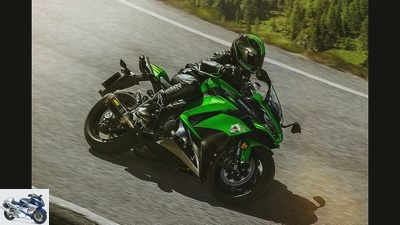
Kawasaki

Kawasaki
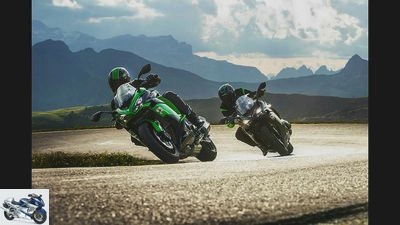
Kawasaki
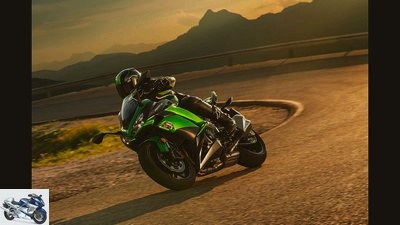
Kawasaki
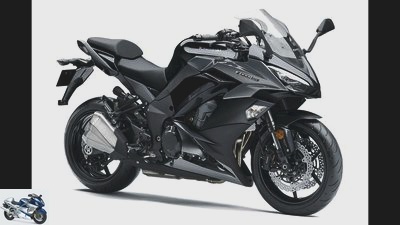
Kawasaki
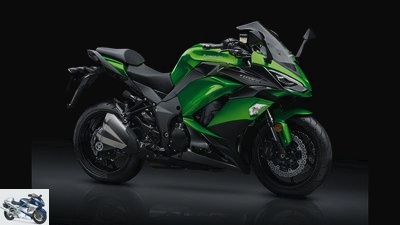
Kawasaki
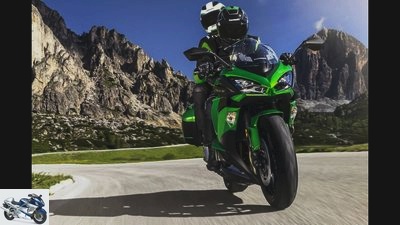
Kawasaki
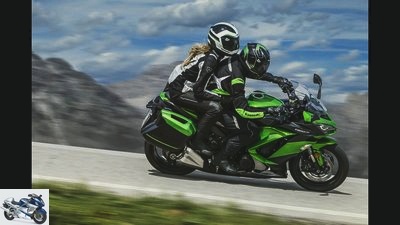
Kawasaki

Kawasaki
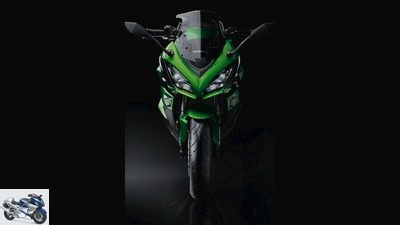
Kawasaki
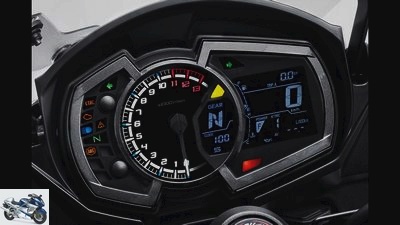
Kawasaki
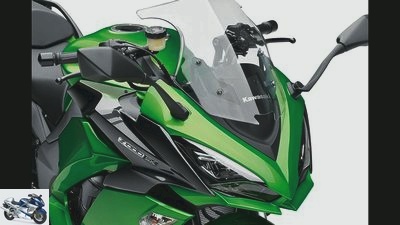
Kawasaki
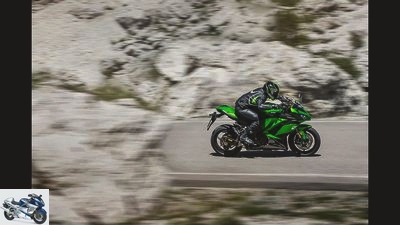
Kawasaki

Schumann
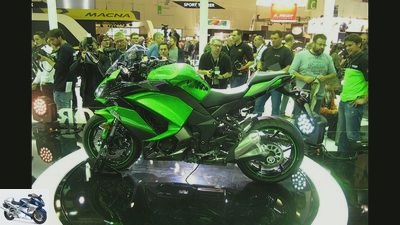
Schumann
Kawasaki Z 1000 SX with a range of 365 km
This could not be determined during the consumption trips. The old Kawasaki Z 1000 SX managed with the usual five liters per 100 kilometers, with the new one with 5.2 liters a few more drops flowed through the injectors over the same distance. Whether it is due to the revised catalytic converters to meet the Euro 4 standard or the changed control unit setting, which should make the power output more balanced, remains open. The fact is, the latter does not reveal any noticeable differences. Despite the slight increase in consumption, the Z 1000 SX driver can still travel 365 kilometers with the 19 liter tank capacity remaining – without having to go to the next petrol pump. Thanks to the adapted seat, he prefers to make use of the ample range. The driver’s upholstery is cut wider towards the front, pampering you with more contact surface. A small change that increases driving comfort without restricting ground contact when standing. In terms of ergonomics, the two sisters are otherwise like pebbles. Handlebars, footrests, levers – everything where it belongs and is positioned in an invitingly friendly manner. Nice: The new SX now has an adjustable clutch lever.
The screen of the Kawasaki Z 1000 SX has always been adjustable in three ways. In the new model, it is cut 15 millimeters higher in the middle. Proper protection from the oncoming hurricane is still only available in the steepest setting – the slight increase in height does not make much difference. This also applies to the cladding, which has grown slightly in width, which should better shield the legs. The effect cannot be felt.
New Z 1000 SX only slightly more expensive
What really catches the eye, however, is the more aggressive design of the front, which openly borrows from the ZX-10R super sports car or the H2 speed bolt. In contrast, the fairing of the old Z 1000 SX looks a bit old-fashioned. The LED lighting of the new Kawasaki Z 1000 SX is also a clear step forward. The functions for low beam and high beam, which are now integrated in both headlights, illuminate the road like white flashes. The yellowish shimmering light of the 2014 SX doesn’t come close.
The two Kawasakis are much closer together when it comes to price. The 2016 Z 1000 SX was available for 12,795 euros, the new one is available from dealers from 12,995 euros.
MOTORCYCLE conclusion
The Kawasaki Z 1000 SX has remained true to its basic features and continues to stand for a speedy sports tourer that, thanks to the softer suspension, now rolls even more comfortably over jarring slopes. There is also plenty of new, state-of-the-art control electronics under the more aggressive shell. That alone is more than worth the small surcharge compared to the previous Z-1000-SX.
Data and measured values
If you would like technical data and the complete measured values determined by us, including all consumption, torque and acceleration values as well as the performance diagram, you can buy the article as a PDF download.
Used Kawasaki Z 1000 SX in price comparison
1000PS marketplace app
Used Z1000SX are waiting on the motorcycle market.
With the Kawasaki Z 1000 SX you get an attractive price-performance offer in the sport touring class. There are many examples of the various series available, so the selection shouldn’t be that difficult. Click here for a direct price comparison: used Kawasaki Z1000SX in Germany.
Related articles
-
BMW R 1200 RS and Kawasaki Z 1000 SX in a comparison test
r-photography.info 18th photos r-photography.info 1/18 BMW R 1200 RS and Kawasaki Z 1000 SX. r-photography.info 2/18 BMW R 1200 RS and Kawasaki Z 1000…
-
2017 super sports car in the country road comparison test
fact 28 photos factstudio.de 1/28 The 2017 superbikes were just battling it out on the racetrack, now the focus is on the country road, everyday…
-
Kawasaki Versys 1000 SE driving report
New items 2019 Top topic Kawasaki 22nd photos Kawasaki 1/22 Colleague Jens Moller Toller aka MoTo drove the new Kawasaki Versys 1000 SE. In Germany only…
-
BMW S 1000 RR old versus new in the test
fact / Joachim Schahl 23 photos 1/23 There is no such thing as impossible, one would like to think in view of this performance curve. fact 2/23 … and a…
-
Kawasaki ZX-10R and BMW S 1000 RR in a comparison test
www.bilski-fotografie.de 25 pictures www.bilski-fotografie.de 1/25 Let’s first take a look at the new Kawasaki ZX-10R. www.bilski-fotografie.de …
-
Kawasaki Z 1000 SX in the driving report
Photo: Kawasaki 11 photos Kawasaki 1/11 The LED headlights are part of the new front fairing. They should shine brighter and wider at the same time….
-
Kawasaki Z 800, Yamaha MT-09 and BMW F 800 R in a comparison test
35 photos 1/35 The center is no longer where it used to be. Because bikes with displacements around 800 cm³…
-
Kawasaki Versys 1000 driving report
Wright Driving report: Kawasaki Versys 1000 (with video) Kawasaki’s all-rounder now with a large four-cylinder No half measures: For the Versys there is…
-
PS Bridgestone Tuner GP 2016 – 1000 Superbikes in comparison test
fact 27 photos markus-jahn.com 1/27 Picture gallery, TunerGP: 1000 Superbikes in comparison. markus-jahn.com 2/27 Bartschat-Kawasaki ZX-10R. Lap time:…
-
On the move with a Kawasaki Z 1000 and Zephyr 1100
www.bilski-fotografie.de 36 photos www.bilski-fotografie.de 1/36 Genetically not related, but they belong to the same family: Kawasaki Z 1000 and Zephyr…